You can learn a lot on a standard 25-key keyboard and I’ll be sure to explain all of this going forward, but I’ll digress for now. If you’re ready to start learning, how you would go about it? There are a few steps that I would take.
To learn piano with just 25 keys, buy a small electric piano or a MIDI keyboard and hook it up to a DAW. Learn the basics of the piano with simple songs and riffs like “Still D.R.E.” from Dr. Dre or Nujabes’ “Feathers.” That said, learning on a full 88-key piano is still the best for a few reasons.
9 Tips for Learning the Piano With Just 25 Keys
1) Don’t Buy A Cheap MIDI Keyboard
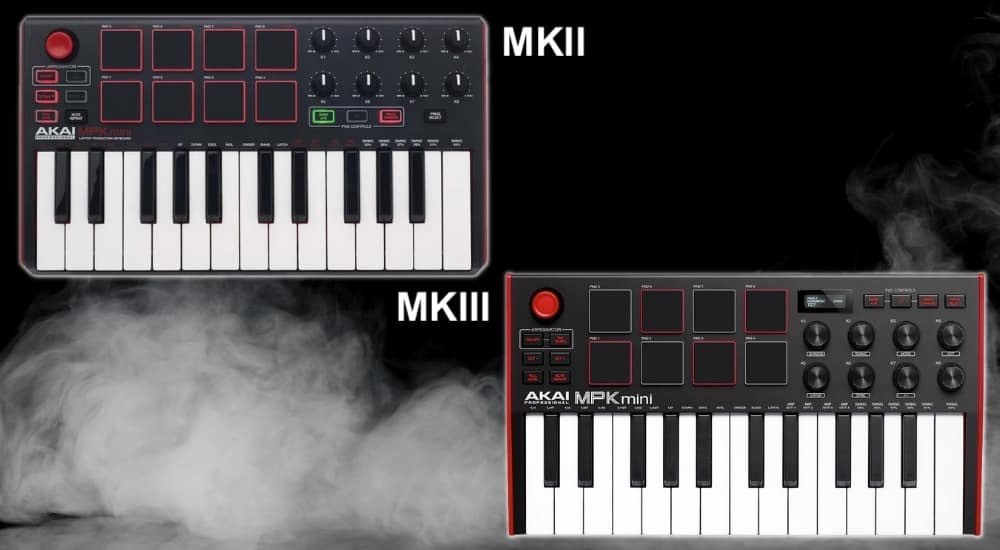
One of the first things I’ll talk to you about is the actual keyboard because it’s important to get something decent. Probably one of the most popular models is the AKAI Mini MPK 25. Because it’s so easy to use and inexpensive, it’s not surprising that it’s popular.
I said in one of my articles about it that users know how the previous generations gave off a bit of a toy-like vibe, but the latest models have better key-beds and seem less like something you would buy for your child.
2) Learn Basic Sounds and Songs That Use Less Than 2-3 Octaves
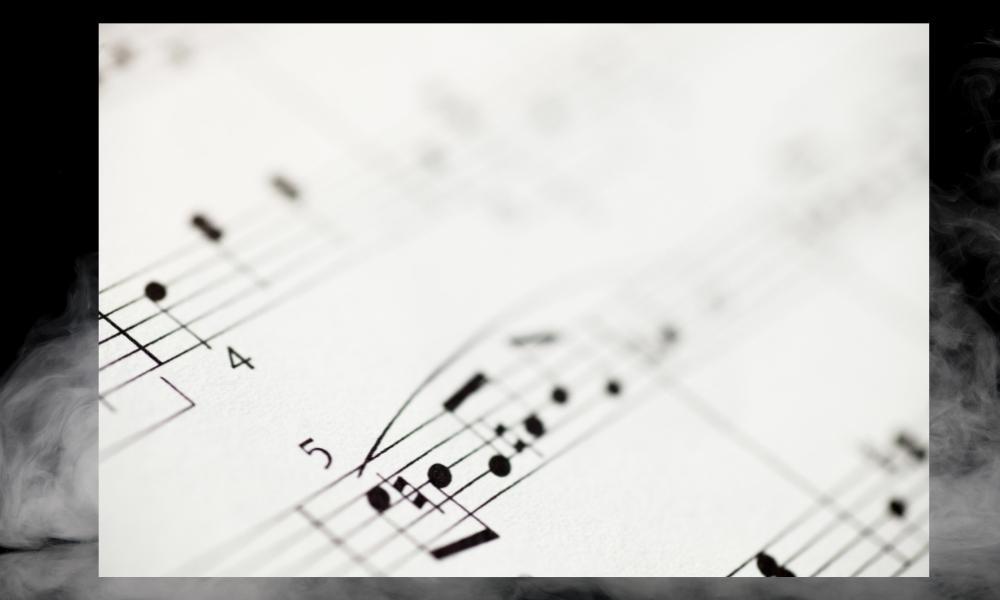
If you’re only using a 25-key model, there’s a limit on what type of song you can learn. You won’t be able to play a Bach piece because his songs usually included more range. Unless you’ve found a version of the song that someone has arranged specifically for beginners.
The way I look at it, learning songs that only use an octave or two is a great way to grasp the fundamentals of the piano/keyboard. I started out with simple riffs and melodies.
We’ll talk more about what type of songs you should learn in a second, but understand that it’s possible you don’t need the entirety of 88 keys from the beginning.
Although you’re more than capable to make great sounds, beats, and songs on just 25 keys, 88 key models are way better. You’ll need 88 keys (or at the very least 61 keys if space is an issue). Without getting too much into the music theory as to why this is, here’s a practical reason:
Even some of the most basic songs will need more than 25 keys. If you’re learning a song with a few basic chord changes, you’ll probably need more than 25 keys to move to the proper position.
3) Learn Songs That Are Fun and Cool Like “Still D.R.E” or Nujabes’ “Feathers”
I can’t stress this point enough because it’s incredibly important. The fact of the matter is that if you don’t like the songs you’re learning, you won’t play the piano. Simply put, you won’t have the inspiration nor the motivation to continue with learning.
When I first started playing the guitar, for example, I was learning Nirvana songs which were alright, but they just didn’t inspire me to play. What really pushed me over the edge was Metallica. Metallica had the coolest riffs I had ever heard in my entire life, and the moment I discovered them, I did whatever I could to learn those songs.
Use the same approach when learning on a 25-key keyboard. I chose “Still D.R.E” and “Feathers” because those are recognizable riffs, they’re easy to learn, they’re within 2 octaves, and they’re hip-hop songs.
They’re not old-school jazz standards like “Autumn Leaves” or classical pieces that not a lot of people want to learn. I’m not picking on jazz and classical, by the way, it’s just that these are less popular genres, so they may not be the best for beginners to practice. Speaking of approach, let’s talk about that now.
4) Organize an Approach – Get the Course PianoForAll
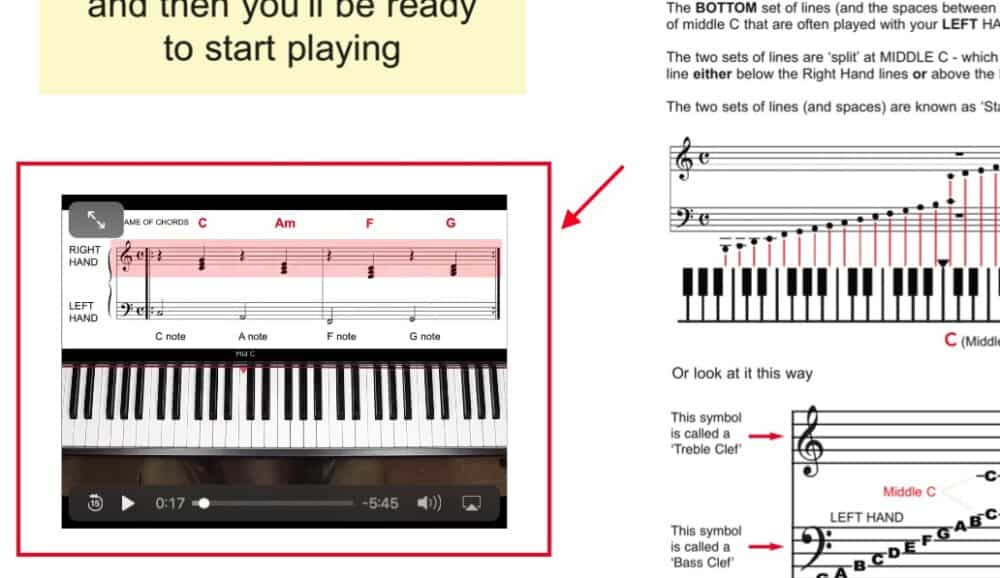
If you want to learn how to play the piano in the cheapest and most convenient way possible, I recommend PianoForAll. It’s one of the cheapest ways to get a handle on the piano and the creator structured it in a really informative and simple way.
What I like best about PianoForAll though are the video tutorials alongside the diagrams, pictograms, charts, and graphs. My only criticism would be to include some more modern and cool tracks for beginners to learn, like the pair I just mentioned (I’ve written more about it in this article).
5) Connect Your 25-Key Keyboard Into A DAW Like GarageBand or FL Studio
Regarding the DAW, If you don’t already have one on your computer (GarageBand is great if you have a macOS or iOS by the way) then AKAI also comes with the software you can use.
It’s not uncommon for MIDI keyboards to come with their own DAW, so pay attention to that. The most popular DAWs are GarageBand, Logic Pro, Ableton, FL Studio, Reason, Pro Tools, Reaper, and Cubase. Do a quick Google search on each DAW and find the one that best serves your needs.
That said, I prefer GarageBand and FL Studio because GarageBand is free on macOS and iOS devices, and FL Studio has very cheap entry editions like the Fruity Edition.
Not only that, YouTubers have made thousands of tutorials for FL Studio so it’s easier to learn. You can’t say the same thing about Cubase, for instance, at least as far as I know.
If you have a Mac, then you can easily download GarageBand and plug your USB cord from your device into the computer. My video above will also help you.
When you open GarageBand a message will appear asking if you want to use the MIDI keyboard you’ve plugged in. That will be the only setup needed to start (here’s my guide in case you need help).
After you’ve connected to the DAW of your choice, you’ll be able to trigger all kinds of sounds, and not just use the piano. By the way, a standard electric piano will work fine too. You don’t necessarily need a MIDI keyboard.
When I asked Robin Hall about this, he said that keyboards are often better than a piano because they’re quieter and less expensive.
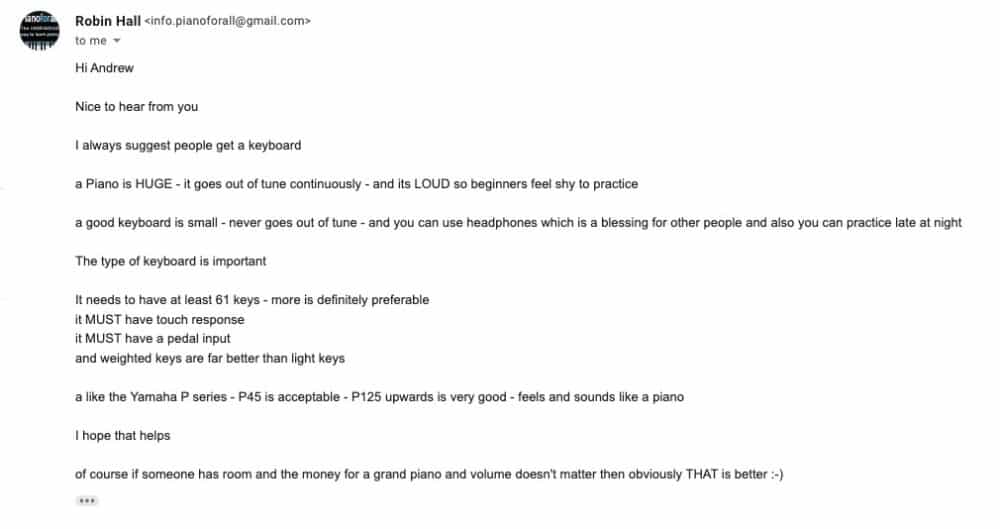
When using your MIDI keyboard to learn piano, use the most basic piano sound provided on your DAW and avoid adding effects for now. At this point, pull up a tutorial on navigating the DAW of your choice. More on that later.
6) Learn Major and Minor Triads First (3-Note Chords)
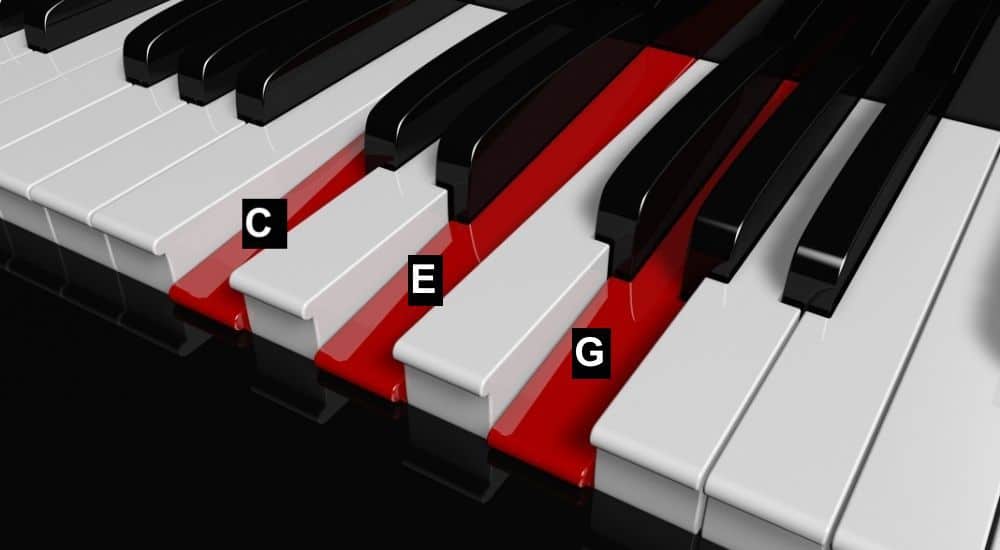
If you’re learning through a course like PianoForAll mentioned before, one of the first lessons will be learning major and minor triads. Start learning major and minor triads in the key of C. That’s because you will only be using the white keys to accomplish any major or minor triad.
I recently started taking guitar lessons again after nearly twenty years of playing the guitar, and my teacher told me to completely forget about what I was doing before. Instead, he told me to memorize all of the triads of C Major on the high E, B, and G strings, as well as their inversions.
Just like he said, once I really – and I mean really – got to know these triads, I noticed a considerable increase in my ability to improvise and understand music. While this was on the guitar, the same principle applies to the piano as well. Take a small bite of music theory and chew on it for a long time – here’s my guide to theory, by the way.
The reason this is so helpful is that western music theory revolves around the C Major scale. It is the backbone and the entire foundation of the structure. It’s a pillar and standard by which everything else is compared.
Once you know the C Major scale and all of its triads all over the piano, including their inversions (it’s also super important to know where the root is), you’ll have a much better handle on your instrument. So bringing this all back to the point of the article – you can learn this on a small piano the same as you would with a bigger one.
7) Memorize Every Black and White Key On the 25 Keys
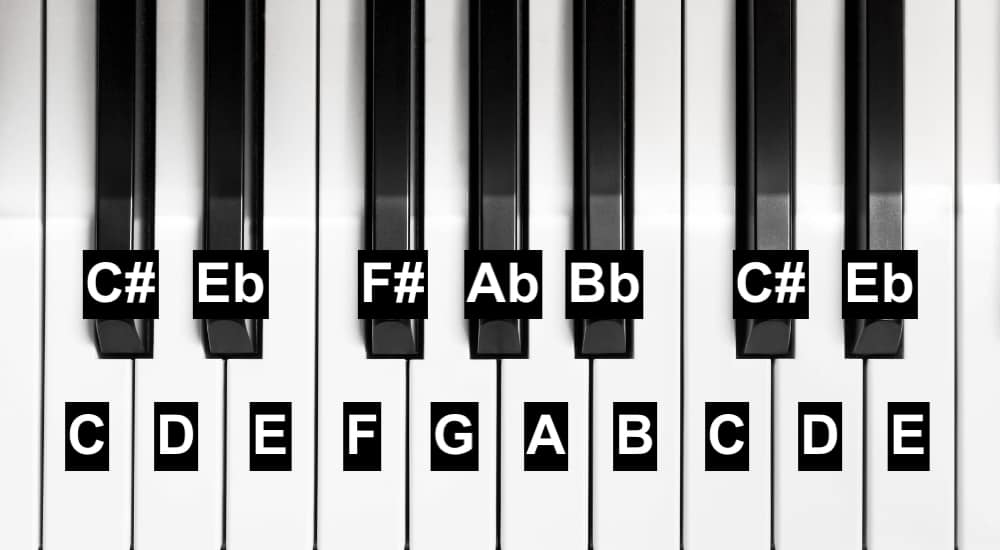
Totally, utterly, and completely memorize the keys of the piano. A lot of this feeds into each other as well. In other words, if you learn all the triads on the keyboard while paying attention to where the root is, you’ll also know the names of the keys.
If you’re having trouble memorizing, cut sticky notes into small squares that will fit on each key with corresponding notes. Once you’ve memorized each note, you’ll be able to see the repeating notes starting at each octave (the next C to the right of the label will start the same note pattern on the keys).
This is what’s so nice about the piano – the notes repeat themselves, unlike the guitar which is more of a labyrinth. Master the keys and major/minor triads on a small keyboard and then it’ll be simple on a large one.
8) Play with a Metronome
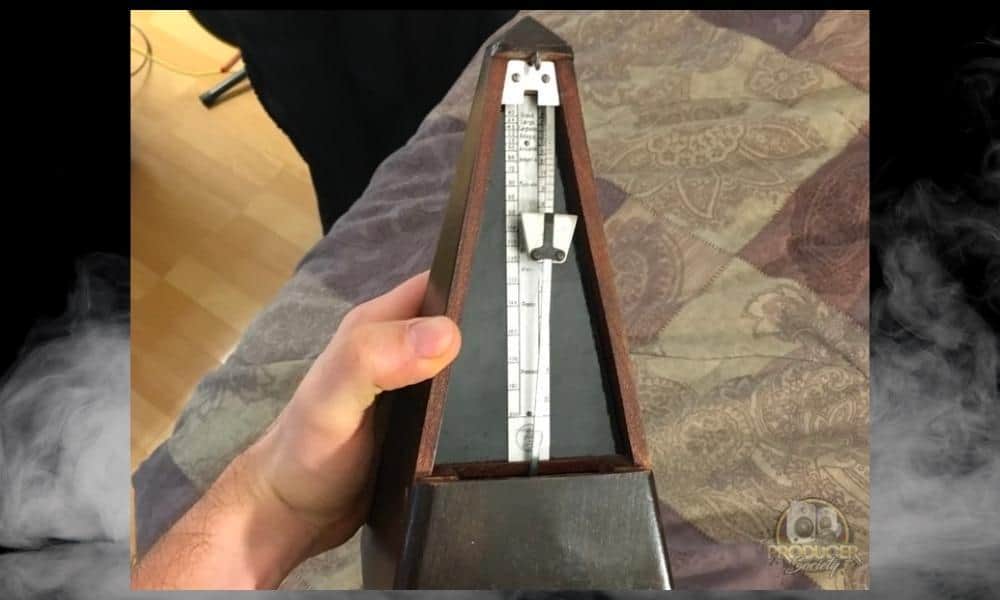
A metronome is a tool that counts, typically with clicks, to a tempo (a certain speed called BPMs beats per measure). Every DAW will have a metronome tool that you can adjust to a certain tempo.
For example, when you’re practicing using triads that you’ve learned, play along to a click to learn how to play in time. Here’s a practical way to start.
Set your metronome BPM to 92 (this also happens to be the same BPM as Dr. Dre’s “Still D.R.E”). Using the C major triad shape and the D min triad shape, change chords every four beats.
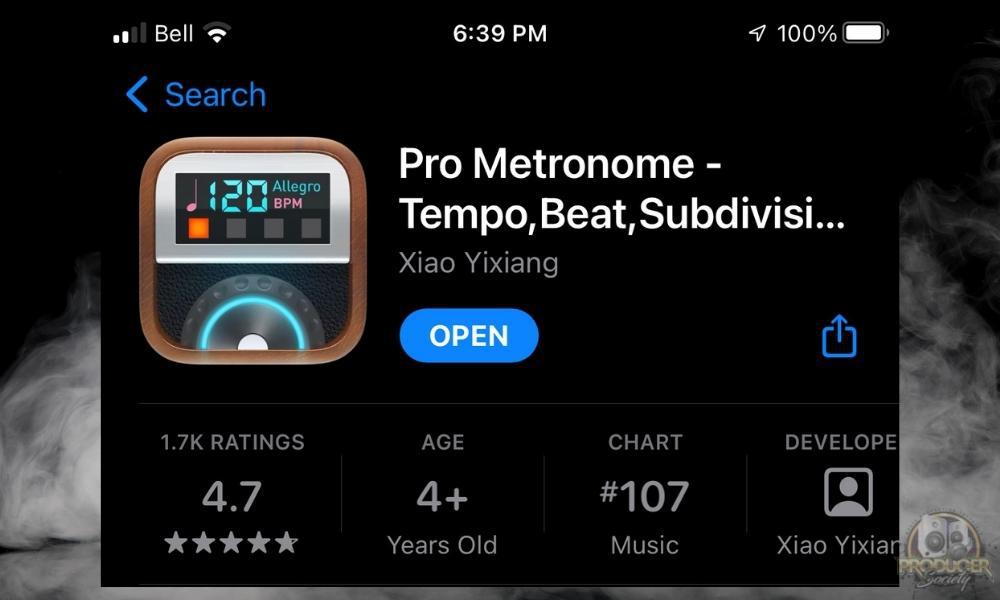
The metronome will sound with a harsher tone to signify the “1” of the four beats; ONE-two-three-four, ONE-two-three-four. On that first harsher click (the one) change back and forth between the two chords.
As you develop, a major key to fast learning is taking it slow. If you’re learning a new song, set your metronome to a slower tempo and take small chunks of the song at a time. You can then build to speed when you have mastered at a slower tempo.
Your piano courses will also map out how to play your most basic rhythmic patterns (whole note, half note, quarter note, and eighth note patterns).
9) Set Small and Attainable Goals and Then Stick To Them
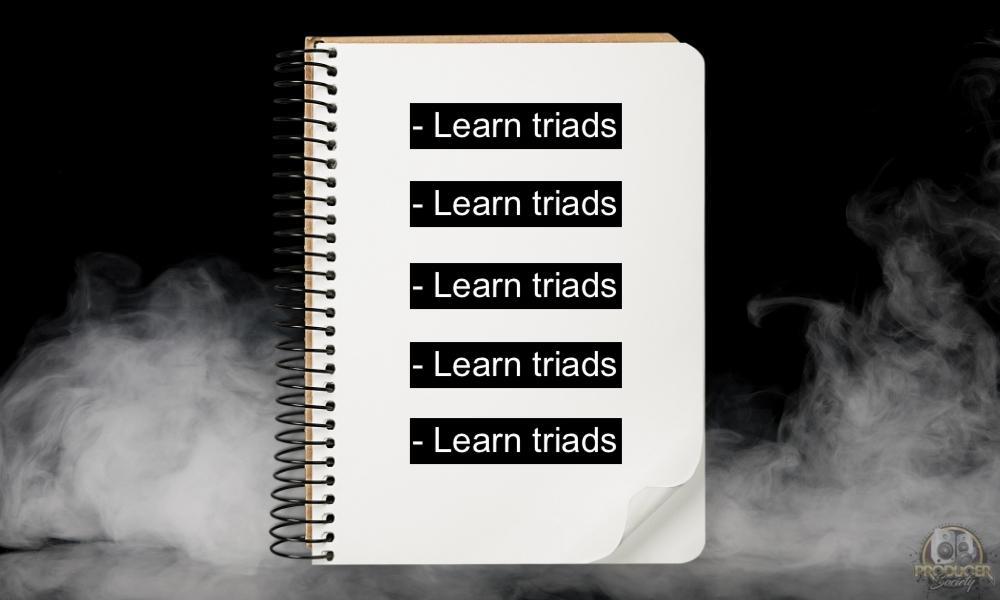
In tip 4 of getting organized with an approach, you are setting yourself up to achieve some goals. Take it a step further and define them. Write a few of your main goals to get started.
Psychology professor Dr. Gail Matthews was able to prove through a case study that you are 42 percent more likely to achieve your goals if you simply write them down. See this article from Inc.
A key way to ensure you meet your goals is to make them small and achievable. An example may be “learn two songs this month,” or “spend 20-30minutes five days a week this month with an online course.”
Why You Shouldn’t Learn Piano With Just 25 Keys
As I said earlier, it’s certainly possible to learn a lot on a 25-key keyboard but 88-key models are just way better. Here are the main reasons why:
1) 88 Key Keyboards Have Way More Range and Possibilities
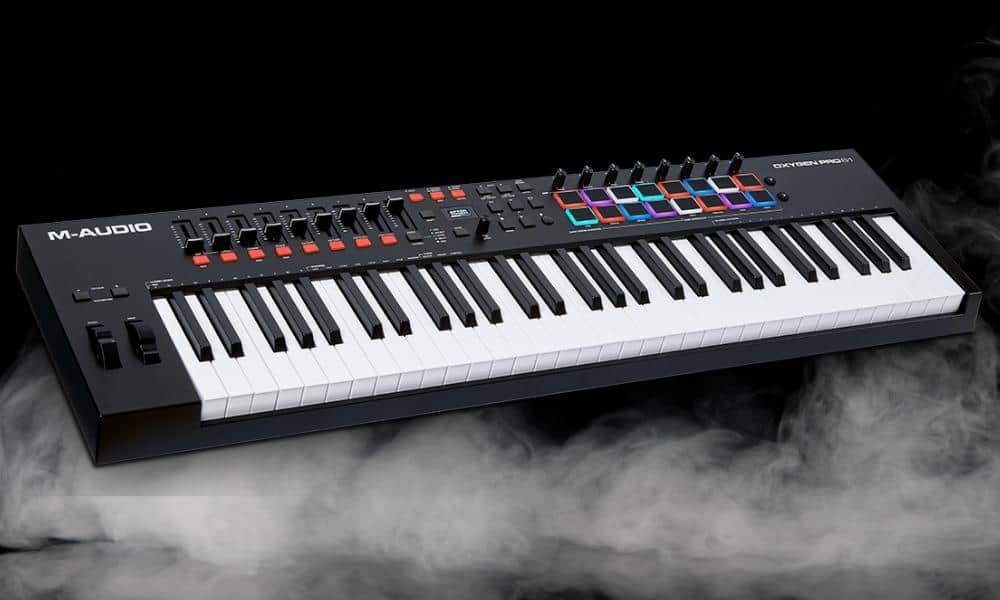
With 88 keys you’ll immediately be able to cover all of the needed tonal range from low to high notes.
With just 25 keys you’re constricted to a small tonal range which will keep you from learning and creating to your fullest potential.
2) You Can Learn Scales and Intervals Easier With More Keys
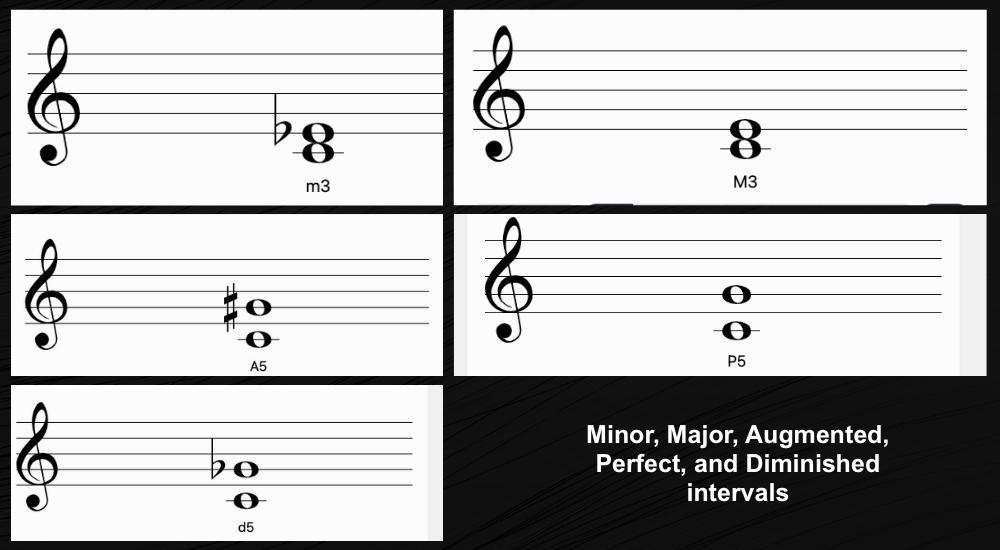
When you dive into scales you’ll quickly learn that 25 keys will limit your ability to easily move up and down the keys depending on your starting point for each key.
3) It’s Easier to Experiment With Chord Inversions and Extensions On A Full 88-Key Keyboard
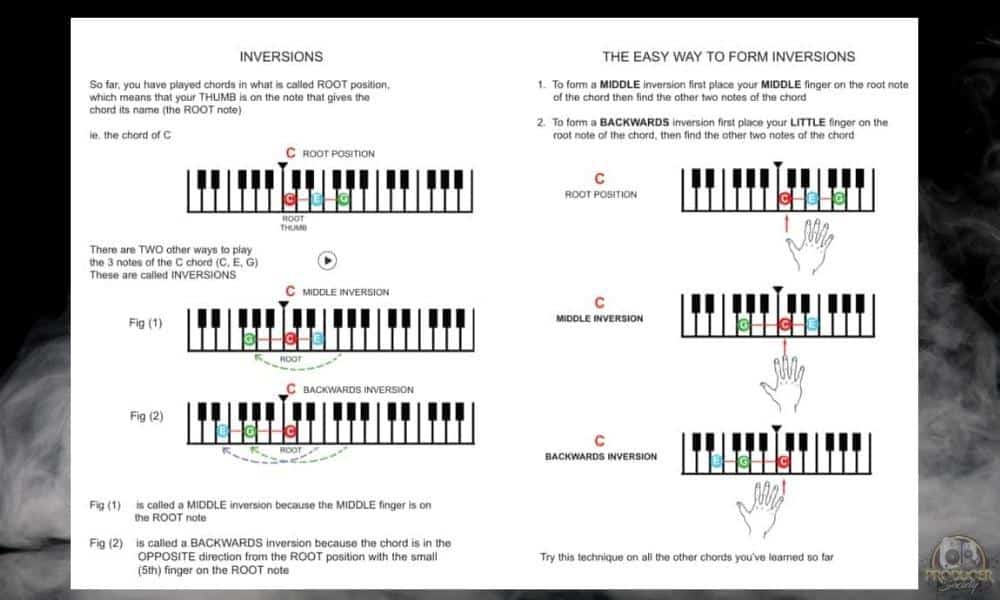
After you’ve grasped a basic understanding of triads, you will start to learn chords using both your hands and you’ll start to learn inversions.
Inversions are ways to play the same chord using the same notes but starting on a different one – all while retaining the tonal character. On a full 88-key keyboard you will have enough space to move your shapes and inversions across the keys.
4) 88-Key Keyboards Usually Have Weighted Keys So They’re Easier to Play
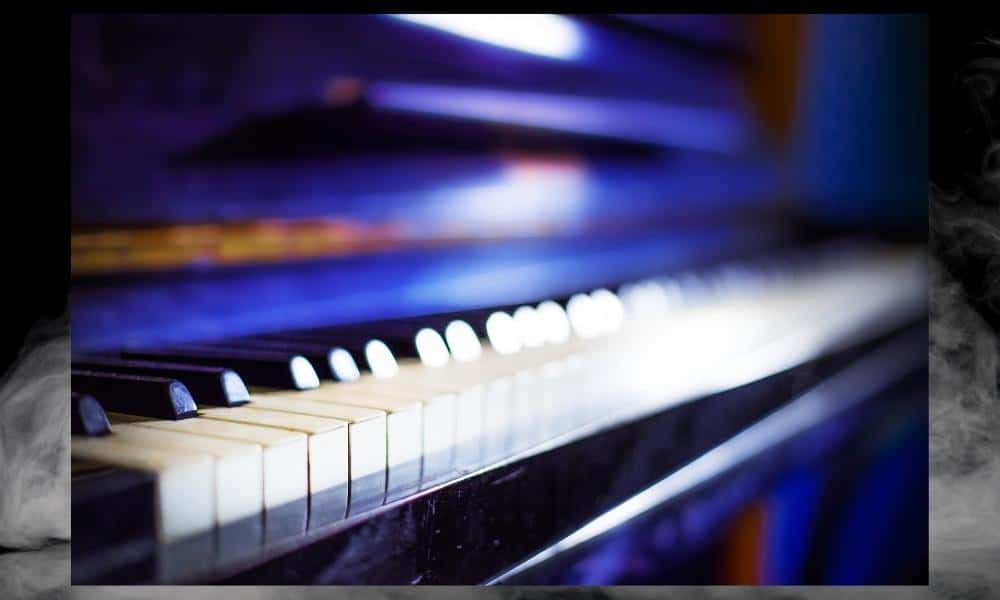
A real acoustic piano will have weighted keys that are sensitive to how soft or hard you hit the keys and will create more or less sound accordingly.
Most 88-key keyboards will have weighted or at least semi-weighted keys which simulate the feel of a real acoustic piano.
If you learn on keys that are designed to simulate a real piano, you’ll have no difficulty transitioning your skills to other keyboards. Going from a 25 key to a larger keyboard will create difficulty when transitioning.
5) You’ll Need More Than 25 Keys to Play Most Piano Arranged Songs
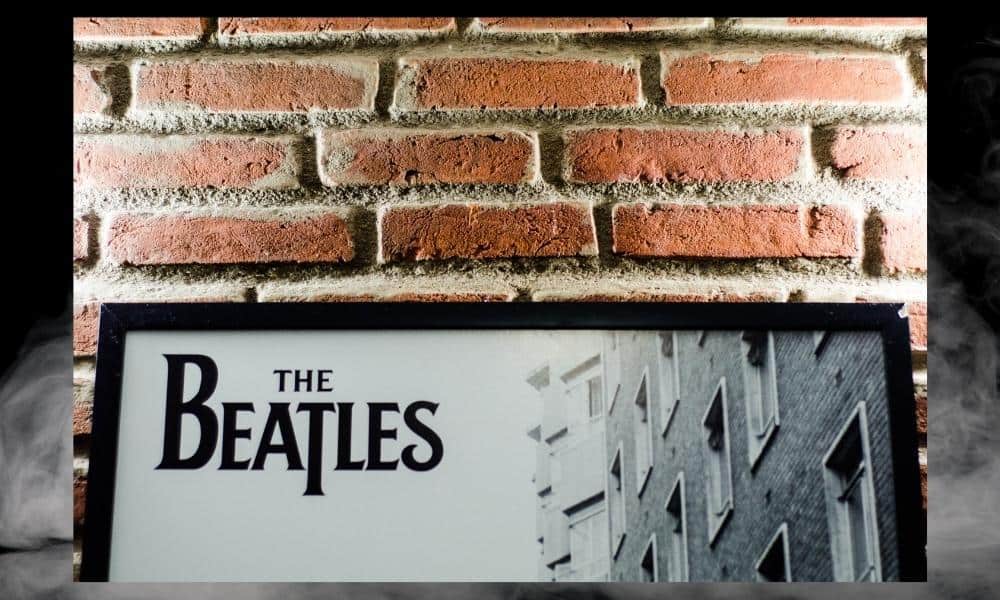
On 25 keys you will not be able to play even some of the most popular beginner songs like “Let it Be” by The Beatles or “All of Me” by John Legend.
Other Articles You May Be Interested In
Important Things to Note About Learning the Piano on 25 Keys
1) You May Have to Purchase A DAW (And Also Learn to Use It)
As I mentioned earlier, if you don’t have a DAW (digital audio workstation), you’ll have to invest in one to start with your midi keyboard. Again, be sure to look at the details of the keyboard you’re purchasing though, oftentimes they will come with a code for a free trial of a particular DAW.
Gear Mentioned
1) AKAI Mini MPK 25
2) M-Audio Oxygen Pro Series 61
3) FL Studio
4) PianoForAll
5) Metronome

 Written By :
Written By :